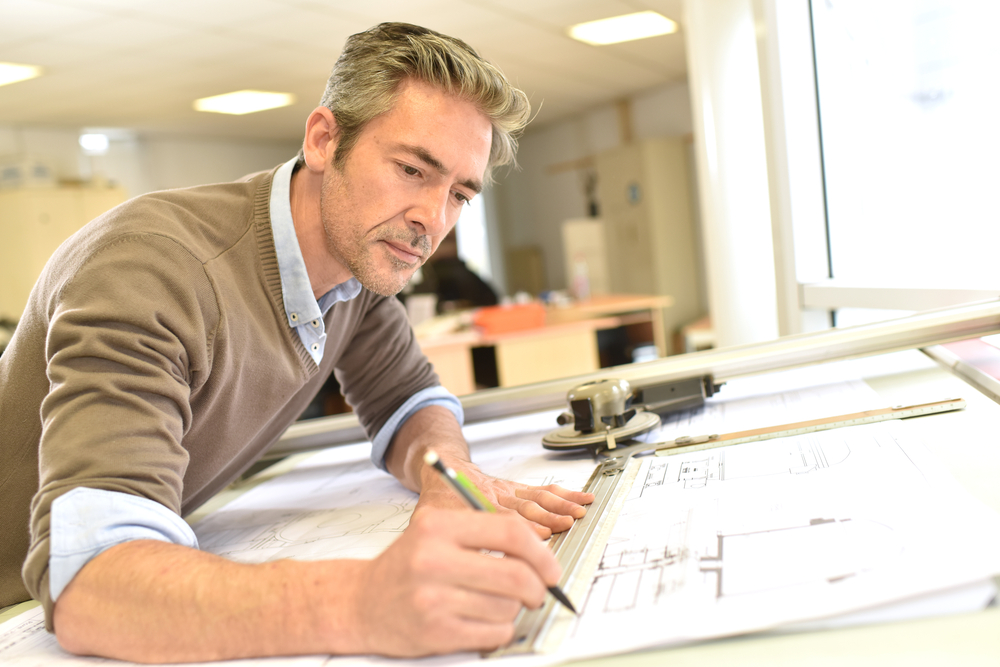Architect Firm Identity Strategies That Get Noticed
Architect Firm Identity Strategies That Get Noticed
Blog Article
Recognizing the Diverse Career Paths Available for Aspiring Architect
As an ambitious Architect, you have a world of occupation paths waiting for you. Each course uses distinct obstacles and chances to apply your creative thinking and technological know-how. Whether you're attracted to conventional style or the nuances of lasting layout, there's a niche that lines up with your passions. Comprehending these varied options can form your professional trip, but which instructions will you choose to discover first?
Traditional Design: Designing Frameworks and structures
Standard architecture concentrates on creating buildings and structures that blend performance with aesthetic appeal. Your designs can mirror social heritage, showcasing regional traditions while satisfying modern-day needs.
You'll develop abilities in preparing, model-making, and website analysis, allowing you to imagine and communicate your ideas successfully. Involving with customers, you'll need to recognize their vision and convert it into viable styles.
Moreover, building codes and sustainability methods are vital in your work, ensuring your structures are secure and eco-friendly. As you grow in your career, you'll locate opportunities in household, industrial, and even reconstruction jobs, each offering one-of-a-kind obstacles. Welcoming conventional design leads the way for a fulfilling profession that pays homage to the past while shaping the future.
Urban Preparation: Forming Communities and Public Spaces
As a hopeful Architect, you can play a crucial role as an urban coordinator, changing how communities function and interact. By utilizing area involvement methods, you'll ensure that homeowners have a voice fit their atmosphere. Plus, integrating lasting style principles will aid develop rooms that not just meet today's demands but likewise protect the future.
Duty of Urban Planners
While several may consider architects as the single enthusiasts behind structures, urban organizers play an essential role in shaping the wider landscape of communities and public spaces. They assess land usage, zoning legislations, and community needs to develop sustainable environments that enhance quality of life. By teaming up with different stakeholders, you'll aid design parks, transportation systems, and houses that advertise social communication and access. Urban planners additionally focus on ecological considerations, making certain that advancements incorporate eco-friendly rooms and assistance biodiversity. Your knowledge in spatial style and community dynamics allows you to visualize future development while maintaining social heritage. In this crucial function, you'll straight influence how individuals experience their environments, making every task a possibility for favorable modification.
Neighborhood Involvement Strategies
Efficient area involvement methods are crucial for city planners to guarantee that the voices of homeowners are heard and valued in the preparation process. To promote purposeful dialogue, you should prioritize open forums and workshops where community participants can share their concepts and worries. By proactively paying attention and incorporating responses, you'll produce areas that mirror the neighborhood's needs, eventually leading to more lasting and effective metropolitan atmospheres.
Sustainable Style Principles
When creating metropolitan spaces, including lasting style concepts is important for creating atmospheres that grow both ecologically and socially. Take into consideration integrating environment-friendly spaces, like yards and parks, to enhance biodiversity and boost air quality.
Creating with water preservation in mind is likewise essential-- consider rainfall gardens and absorptive surface areas to manage stormwater. Involving area participants throughout the planning process warranties that the spaces you produce fulfill their needs and encourage social interaction. By welcoming these concepts, you'll add to vibrant, lasting city landscapes that benefit everyone.

Landscape Architecture: Producing Sustainable Exterior Atmospheres
As you explore landscape style, you'll uncover vital design principles that produce lovely and useful outside spaces. Lasting techniques play an essential role in making certain these environments flourish while lessening ecological influence. And also, you'll find a variety of profession possibilities that permit you to make an actual difference in how individuals engage with nature.
Design Concepts in Landscape
Understanding layout principles in landscape architecture is essential for creating sustainable outside environments that integrate with nature. You'll need to contemplate elements like range, proportion, and equilibrium to guarantee your layouts really feel cohesive and inviting. Furthermore, pay attention to seasonal adjustments, developing with products that match the surroundings year-round.
Lasting Practices Review
Lasting methods in landscape style not just focus on aesthetics yet also focus on ecological health and wellness and source conservation. You can design rooms that promote dirt health and wellness, such as making use of organic materials and practicing permaculture concepts. Ultimately, these methods ensure your designs profit both people and the environment for years to come.
Profession Opportunities Exploration
With a strong foundation in sustainable methods, landscape style provides a variety of occupation paths that allow you to make a meaningful effect on the setting. You might work as a landscape developer, producing cosmetically pleasing and practical outdoor areas, or specialize in ecological reconstruction, helping to revive damaged ecological communities. Urban planners usually collaborate with landscape engineers to produce environment-friendly areas in urban settings, enhancing city livability. If you're enthusiastic about education, consider coming to be a landscape architecture teacher, inspiring future generations. Additionally, you may deal with nonprofits focused on ecological sustainability or take part in research to innovate new techniques. Each path not only forms stunning settings however likewise promotes a much healthier world for future generations.
Sustainable Design: Concentrating on Eco-Friendly Practices
As you explore your profession in architecture, welcoming environmentally friendly techniques can establish you apart in a competitive area. Lasting layout concentrates on developing structures that decrease ecological influence while boosting passenger wellness. By integrating renewable products, energy-efficient systems, and sustainable building methods, you'll add to a greener future.
Begin by getting understanding of eco-friendly qualifications like LEED check it out or BREEAM, which can boost your credentials. Take into consideration exactly how natural light, air flow, and thermal effectiveness can maximize style. Work together with engineers and ecological experts to introduce solutions that minimize waste and save resources.
Don't fail to remember the value of neighborhood involvement-- engaging neighborhood stakeholders can influence styles that balance with the setting. As customers increasingly focus on sustainability, your know-how in eco-friendly practices will certainly not only bring in tasks but additionally fulfill your interest for accountable design. Accept this essential aspect of the profession, and see your job prosper.
Historic Conservation: Shielding and Bring Back Social Heritage
While you commence on your architectural trip, consider the crucial duty of historic preservation in keeping our social heritage. This area focuses on the defense and remediation of significant buildings, websites, and structures that inform the stories of our past. By engaging in historical preservation, you'll assist protect the architectural legacy that shapes area identification.
As a historical conservation Architect, you'll examine historical relevance and assess the problem of frameworks. You'll work carefully with historians and conservationists to ensure genuine remediation techniques are used. This profession course permits you to mix creative thinking with study, allowing you to design options that appreciate original products and workmanship.
Your job not just adds to sustainability by recycling existing structures yet additionally promotes a sense of satisfaction within communities. Embracing this course will aid you end up being a guardian of history, protecting the tales and looks that enrich our lives.
Interior Style: Enhancing Indoor Spaces
Historical preservation and interior architecture both share a dedication to boosting the constructed setting, yet they concentrate on different elements. While historic conservation emphasizes maintaining a framework's historical and cultural value, interior design zeroes in on maximizing indoor areas for functionality and aesthetics.
As an ambitious Architect, you'll find that indoor architecture permits you to blend creative thinking with technical skills. You'll design spaces that not just look good but likewise advertise convenience and performance. This field entails comprehending just how light, color, and materials interact within a space, affecting state of mind and use.
You'll service different tasks, from property homes to business offices, making sure that each environment satisfies the demands of its passengers. By focusing on customer experience, you can transform insides right into useful and inspiring areas, making a considerable effect on exactly how people connect with their surroundings. Embrace the chance to boost indoor atmospheres and form the method individuals live and work.
Industrial Design: Combining Capability With Looks
Commercial design plays a necessary duty in creating products that seamlessly blend looks with capability, making sure that what you make use of daily is not only visually enticing but likewise functional. As an ambitious Architect, you could check here you could engage on your own in this area, concentrating on designing whatever from furnishings to customer electronic devices. Your job includes comprehending customer demands, materials, and producing processes, enabling you to develop ingenious services that improve day-to-day experiences.
In commercial design, you'll frequently collaborate with designers, online marketers, and makers, making certain that your layouts are not only gorgeous however also viable. This profession path supplies a dynamic atmosphere where creativity meets functionality, making it a fulfilling choice for designers interested in forming the products of tomorrow.
Often Asked Inquiries
What Educational Credentials Do I Required to Become a Designer?
To become an architect, you'll need a specialist degree in architecture, normally a Bachelor's or Master's. Additionally, you'll need to complete an internship and pass the Architect Enrollment Assessment to exercise legally.
Exist Accreditation Requirements for Various Building Career Paths?
Yes, there're qualification needs for numerous architectural courses. Architect. You'll require to pass tests, total internships, and in some cases pursue specialized training, depending on your chosen emphasis, like landscape architecture, urban design, or historic preservation
What Software Application Skills Are Crucial for Engineers Today?

Just How Can I Gain Practical Experience While Researching Architecture?
You can acquire sensible experience by interning at architectural companies, getting involved in design competitions, offering for neighborhood projects, or teaming up with classmates on real-world projects. These opportunities enhance your skills and construct useful connections in the industry.
What Task Opportunities Exist Outside Typical Style Firms?
You can check out different work chances outside typical architecture firms, like metropolitan preparation, indoor style, landscape architecture, building and construction administration, realty advancement, or perhaps roles in sustainability consulting. Each offers special challenges and incentives.
Whether you're attracted to standard architecture or the nuances of sustainable layout, there's a niche that straightens with your passions.When developing city rooms, including sustainable design principles is critical for creating environments that prosper both environmentally and socially.As you discover landscape design, you'll uncover necessary design principles that produce functional and lovely outdoor rooms.Comprehending layout principles in landscape design is crucial for creating sustainable exterior atmospheres that balance with nature.In commercial Find Out More layout, you'll usually work together with suppliers, engineers, and marketing experts, making sure that your styles are not only lovely but additionally practical.
Report this page